Coming to grips with the spread of cassava mosaic disease in Southeast Asia
As a new cassava disease spreads across Southeast Asia, researchers respond with a regional strategy to manage it. The viruses that cause cassava mosaic disease (CMD) are spread locally by an insect vector, but move over long distances through stem cuttings, which are used as seed. Understanding the seed networks that spread the disease helps to develop solutions to control it.
Cassava is the third most widely grown crop in Southeast Asia, after only sugarcane and rice. In Cambodia and Vietnam, most cassava is grown by smallholders, as a cash crop to sell to processors who make starch and other products for domestic and export markets. Disaster struck in 2015, when CMD was first reported in eastern Cambodia. By 2017 the disease was lowering crop yields across Cambodia and southern Vietnam, threatening the 55 million tons of cassava produced in the region.
The disease is caused by the Sri Lankan cassava mosaic virus, which is spread by the whitefly (an insect vector), and through the informal, commercial seed network that farmers use to access stems as planting material.
The newly arrived disease was a call for regional action. In 2018, CIAT, IITA and other partners of the GCP21 (Global Cassava Partnership for the 21st Century) met to propose a regional strategy for CMD: integrating surveillance data across the region, mapping disease distribution and spread, sharing information about the disease with farmers and extension agents, propagating and trading virus-free stakes, testing varieties already grown in the region to see which ones were most CMD-resistant, limiting exchange to healthy planting material and breeding new CMD-resistant cassava varieties.

Cassava planting material in Cambodia. E. Delaquis/CIAT
In 2018 a survey of cassava seed systems in Cambodia and Vietnam, was conducted by CIAT. According to the survey, the exchange of University of Florida, Wageningen University and Research, (WUR), Fujian Agriculture and Forestry University, University of Queensland, China Academy of Agricultural Sciences, University of Battambang – Cambodia, General Directorate of Agriculture – Cambodia, Tay Nguyen University – Vietnam, Hung Loc Agricultural Research Center – Vietnam, the exchange of planting stems is likely the main source of risk for long-distance disease spread (see also the story on network analysis in FP2). The study found that, as in many parts of the world, farmers collect most of their cassava seed on their own farm, or they exchange seed with other farmers within their own community. But Cambodia and Vietnam also host an efficient, large-scale, commercial cassava seed network, trading large volumes of seed both within and between countries. In Asia, millions of tons of cassava roots are trucked from farmers’ fields to processing factories each season; these transportation channels also provide a practical and inexpensive network for exchanging cassava stems. Warm, humid southern Vietnam can produce stems all year long, allowing traders to sell large amounts of planting material to farmers in northwest Cambodia, a rapidly growing cassava area with a three-month dry season that limits seed availability.
“Viruses do not recognize international borders. Like the stem exchange networks themselves, solutions to the CMD epidemic must be regional,” says Erik Delaquis, a CIAT researcher who was involved in the seed network study.
Seed exchange networks efficiently provide new varieties to large numbers of farmers, while allowing farmers to recover from seed loss. But these seed networks can inadvertently move seed- borne diseases like CMD hundreds of kilometers in a single season. Understanding how the seed trade spreads disease is critical for designing policies that allow farmers to access the seed they need, while making sure that the stems are healthy. The RTB seed systems team has developed tools for evaluating disease surveillance and management strategies in seed systems, in collaboration with Kelsey Andersen and Karen Garrett of the University of Florida. The RTB team is currently developing recommendations for optimizing sampling and interventions in the cassava seed systems in South East Asia.

Inspecting cassava for disease. Communities have been taught more sustainable planting methods to improve cassava production. Kampong Cham province, Cambodia. G. Smith/CIAT
James Legg, who leads RTB’s FP3, notes that, “one of the key strengths of RTB is that it allows cassava experts from Africa (IITA), Latin America and Asia (CIAT) to share experiences in battling complex regional pandemics such as the one currently spreading through Southeast Asia.” The RTB seed systems team is therefore working closely with plant virologists as well as breeders from CIAT and IITA to ensure that partners in Asia get access to CMD-resistant varieties as well as the best tools available for monitoring disease spread and rapidly producing virus-free planting material. Virologist Wilmer Cuéllar is leading CIAT’s efforts to slow the spread of the CMD pandemic. He points out that success depends on strengthening the capacity of national research and plant protection teams. CMD will almost certainly spread even more widely before the benefits of the control efforts begin to take effect. However, mitigating the CMD pandemic in Southeast Asia will remain a top priority for the immediate future. With the international collaboration and partnerships that RTB can draw on, the team is confident that cassava will continue to play a key role in the economic development of Southeast Asia.
SHARE THIS
